WASHINGTON – Dozens of children on floor mats, covered with Mylar blankets and crowded side-by-side in a holding facility. Families huddled under a bridge as they await processing at the U.S.-Mexico line. And lawmakers standing outside a border facility, spouting their outrage over the conditions.
These scenes, common under the Trump administration, continue to play out as thousands of migrant families, children and adults head to the U.S.-Mexico border in hopes to come to the United States – even as border laws keep changing.
America’s policies toward migrants at the southern border kept shifting over the past four years as the U.S. pivoted from former President Donald Trump’s rigid immigration views to President Joe Biden’s less-restrictive positions. Add to that the increasing numbers of migrants and unaccompanied children coming to the border and the complications of the COVID-19 pandemic.
Trump implemented several hardline immigration policies, including a “zero-tolerance” policy that separated children from parents who crossed illegally through the U.S.-Mexico border. While many of those policies have changed under Biden, the images of families and children at the border continue to be reminiscent of the previous administration and showcase issues the U.S. faces when dealing with immigration policy.
The Biden administration is currently accepting unaccompanied migrant children into the United States, while turning away most adults under a Trump-era policy called Title 42, which allows Customs and Border Protection to expel undocumented migrants to prevent the spread of COVID-19 in holding facilities. But now Mexico isn’t accepting some families back, leading the Biden administration to begin accepting some families with small children.
Here’s how policies on immigration have changed from the last administration to now:

Increase in migrants before Trump inauguration
Trump made immigration a prominent part of his agenda throughout his four years in office. During his 2016 presidential campaign, he often criticized migrants and promised to build a wall along the U.S.-Mexico border. After winning the election, an increase in migrants tried to come to the United States ahead of his inauguration.

Trump deploys military
Trump deployed the military to the U.S.-Mexico border in October 2018 because a group of migrants was heading to the United States’ southern border from Central America. The group of migrants, which Trump often referred to as a caravan, were mostly people from Honduras fleeing violence and poverty. As the group made its way up north, it grew in size.

Asylum policy changes
In November 2018, Trump implemented a policy that barred migrants from claiming asylum if they entered the United States between border checkpoints. The policy went against U.S. and international law, which says migrants are allowed to seek asylum regardless of whether they do it at an official checkpoint or not. Although initial court rulings allowed the policy to continue in some states, a federal court in September 2019 blocked the policy nationwide.

‘Zero tolerance’
In April 2018, the Trump administration implemented a “zero-tolerance” policy that separated children from their parents who were seeking asylum at the U.S.-Mexico border in an effort to deter migrants from coming to the U.S. More than 4,300 families were separated under the policy.
Trump signed an executive order in June 2018 halting the policy. However, a limited number of families were still separated throughout the rest of Trump’s presidency. Hundreds of parents were still missing from their children when Biden took office because officials did not properly track children who were separated from their parents under the Trump administration. Biden has since created a task force to reunite children who were separated from their parents.

‘Remain in Mexico’
Trump in January 2019 implemented the Migrant Protection Protocols, known as “Remain in Mexico,” which forced migrants to wait in Mexico for their court hearings. The policy caused many migrants to stay in dangerous Mexican border towns with some becoming victims of violence.

Trump’s pressure on Mexico
Trump in March 2019 pressured Mexico to do more to stop migrants from coming to the United States. Trump threatened to close the U.S.-Mexico border and implement tariffs against Mexico. Mexico increased security at its border with Guatemala.

Overcrowded and unhygienic conditions
The Department of Homeland Security’s Office of Inspector General released a report in July 2019 that showed overcrowded and unhygienic conditions at five processing centers in Texas. Children were also kept at those processing facilities longer than 72 hours. By law, children are supposed to be moved out of CBP custody within 72 hours.
“We are concerned that overcrowding and prolonged detention represent an immediate risk to the health and safety of DHS agents and officers, and to those detained,” the report said.


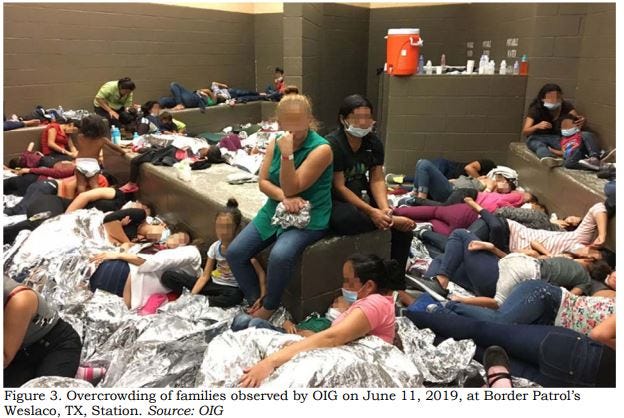

New asylum policy and ICE raids
In July 2019, Trump implemented a policy that would not allow migrants to seek asylum at the U.S.-Mexico border if they passed through another country first. While a majority of migrants are from Central America, and would have to pass through Mexico, migrants seeking asylum are also coming from Africa, Cuba and Haiti.
As part of his crackdown on undocumented immigrants in the United States, raids by Immigration and Customs Enforcement increased. In August 2019, ICE raided seven chicken plants in Mississippi, where hundreds of immigrant workers were arrested. Some were mothers who were still breastfeeding their young babies, as well as single parents.

The start of Title 42
In March 2020, at the onset of the coronavirus pandemic, the Centers for Disease Control and Prevention instituted a policy, Title 42, that allowed the CBP to expel undocumented migrants to prevent the spread of the virus in holding facilities. The majority of migrants, including children, were deported under that policy.


Biden takes over
Within days of Biden’s inauguration Jan. 20, he halted construction of the border wall, stopped the Migrant Protection Protocol and his administration began processing individuals who were part of the policy.
Although Biden is continuing to keep Title 42 in place, his administration is now accepting children. However, the Biden administration has struggled to quickly move children out of CBP custody and into the custody of the Department of Health and Human Services while HHS vets sponsors and family members for the children. Many children are being kept in jail-like facilities that are overcrowded and hundreds of children are being kept in those facilities longer than the 72-hour limit.
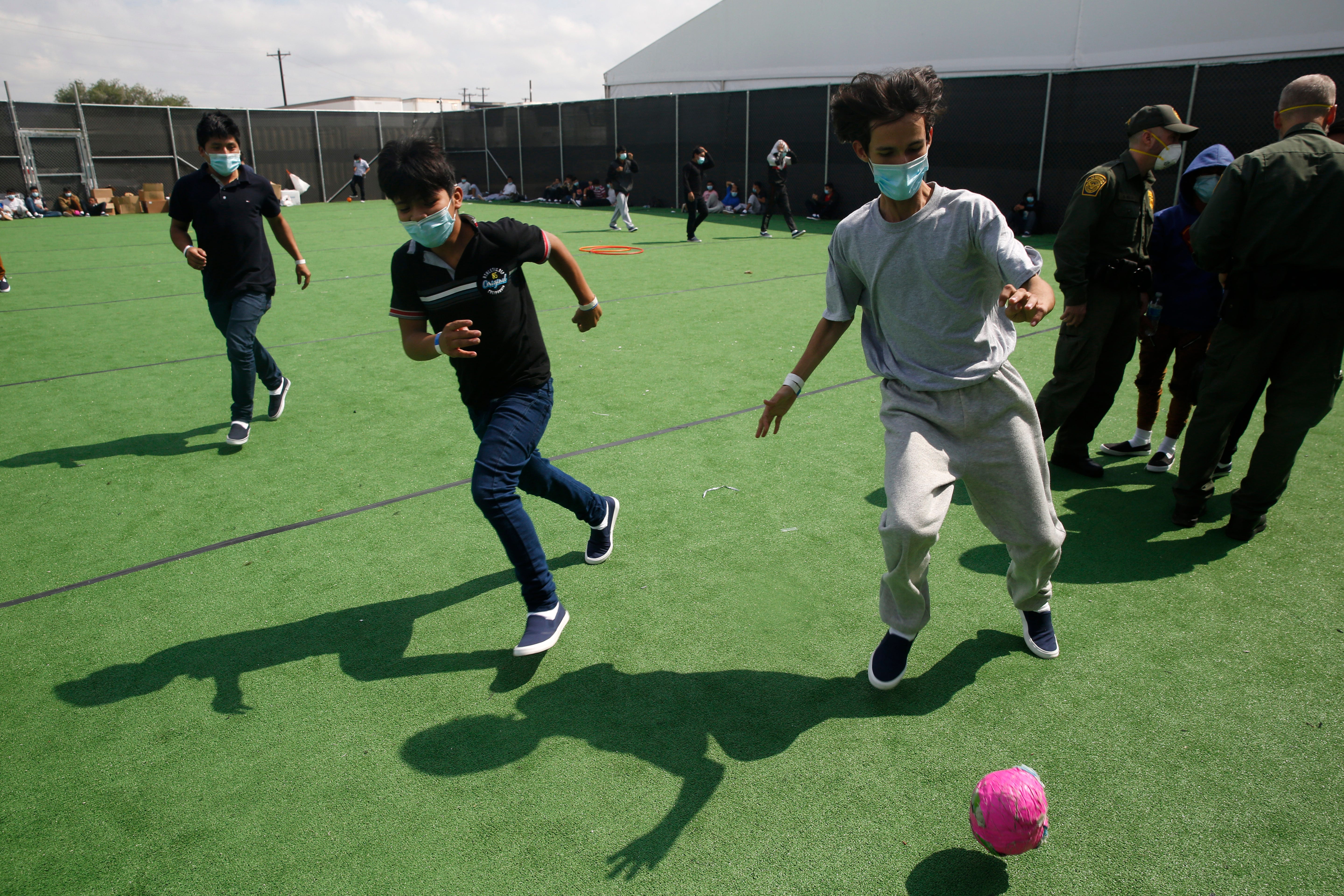
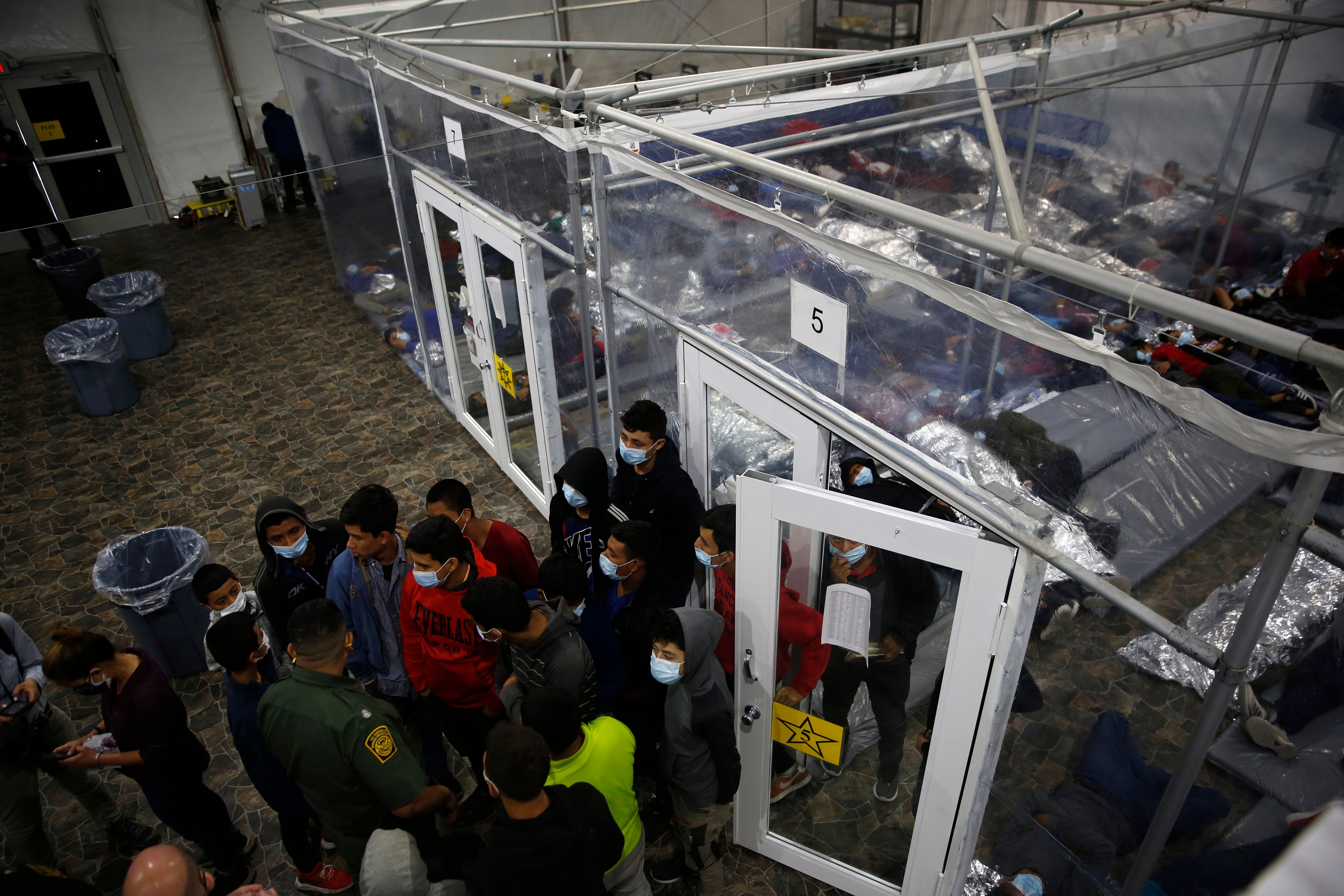
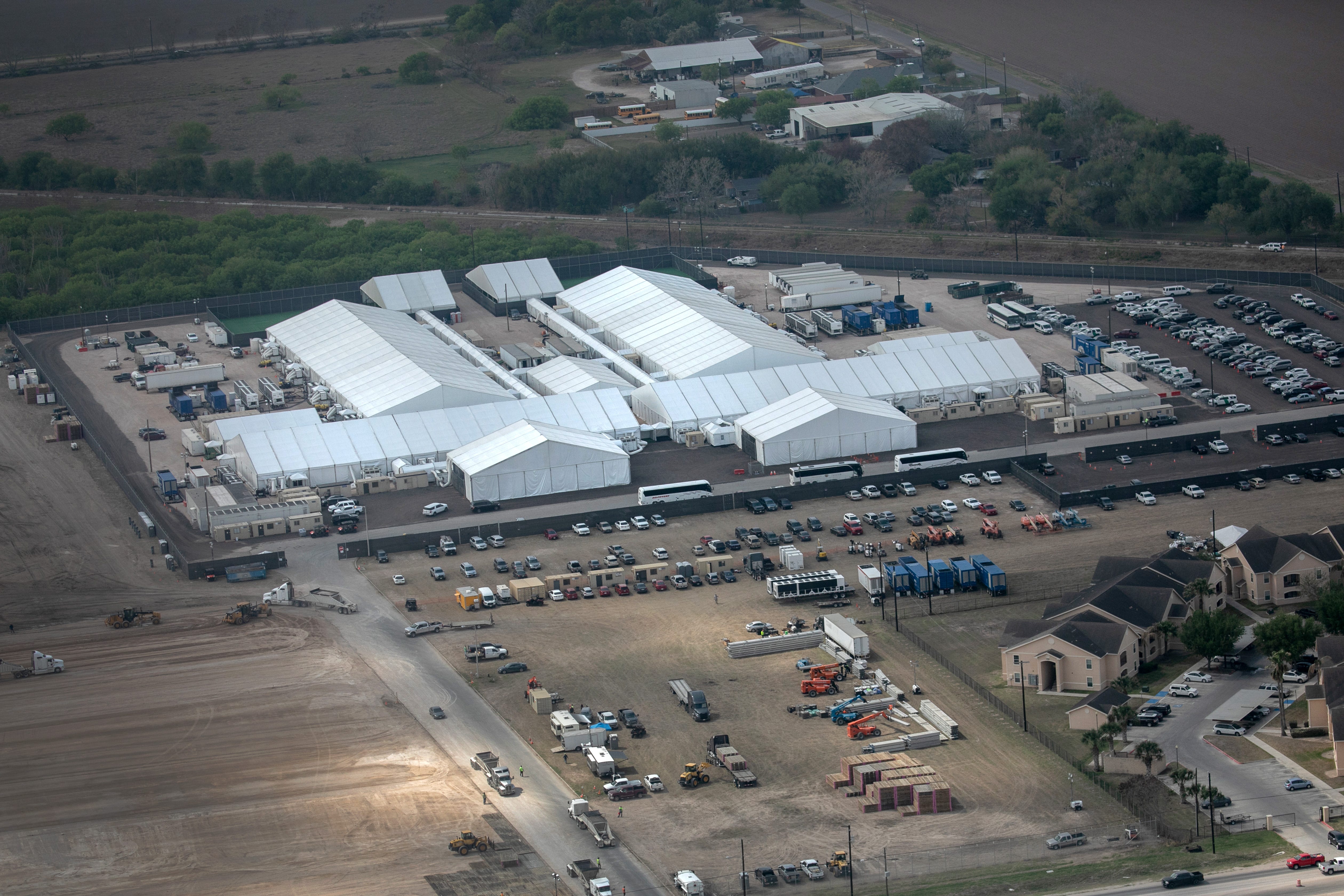
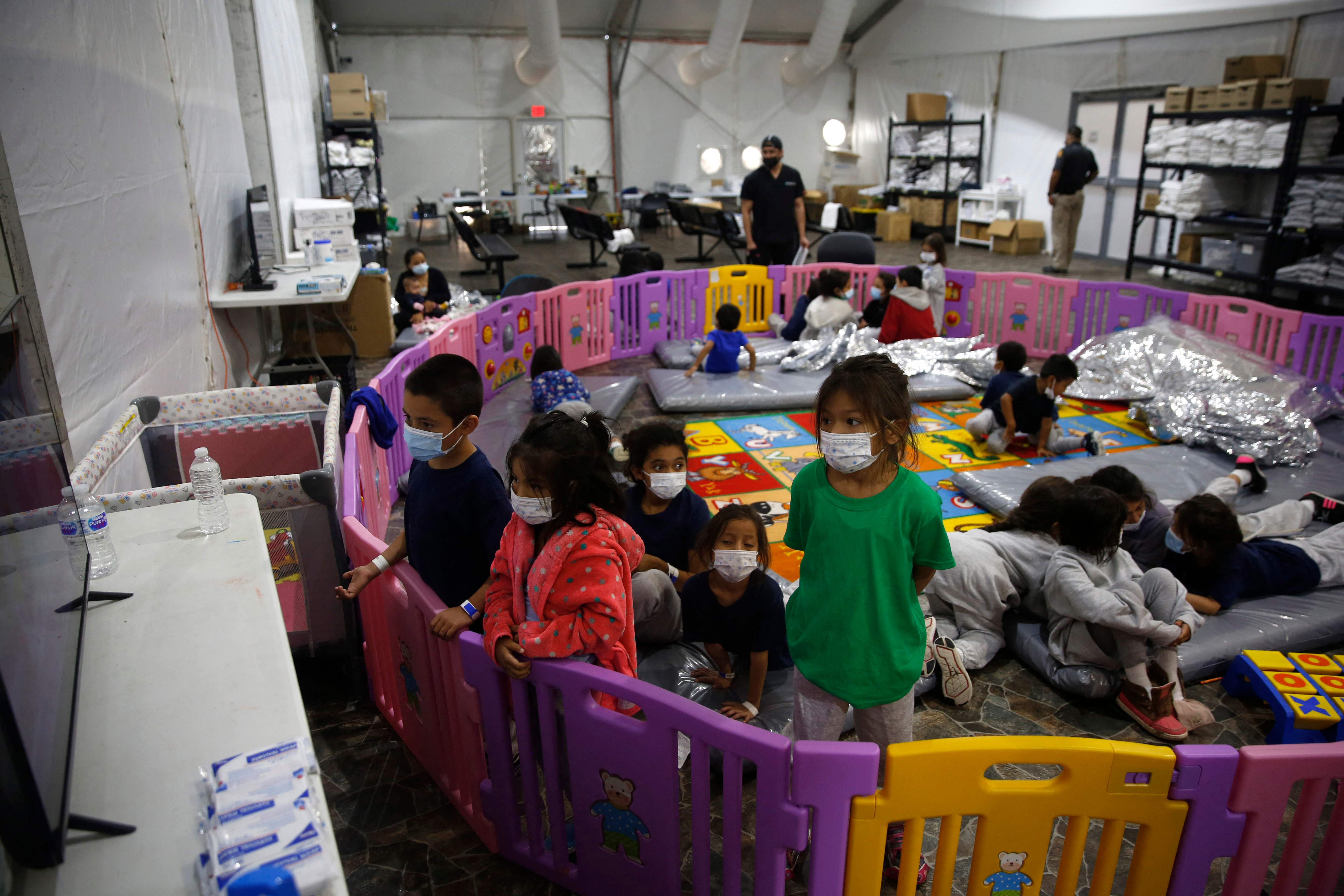 Clockwise, from top left, minors play soccer on a field at the Department of Homeland Security holding facility run by the Customs and Border Patrol on March 30, 2021, in Donna, Texas. Minors talk to an agent outside a pod. Young unaccompanied migrants, ages 3-9, watch TV inside a playpen. The Donna location is the main detention center for unaccompanied children coming across the U.S. border in the Rio Grande Valley.JOHN MOORE, GETTY IMAGES; DARIO LOPEZ-MILLS, POOL/AFP VIA GETTY IMAGES
Clockwise, from top left, minors play soccer on a field at the Department of Homeland Security holding facility run by the Customs and Border Patrol on March 30, 2021, in Donna, Texas. Minors talk to an agent outside a pod. Young unaccompanied migrants, ages 3-9, watch TV inside a playpen. The Donna location is the main detention center for unaccompanied children coming across the U.S. border in the Rio Grande Valley.JOHN MOORE, GETTY IMAGES; DARIO LOPEZ-MILLS, POOL/AFP VIA GETTY IMAGES
In January, a Mexican law stopped the United States from turning away migrant families with young children at some parts of the U.S.-Mexico border, as the Mexican government was no longer accepting children and families to their government-run facilities. The Biden administration has noted it has accepted some families, but other families are still being expelled to Mexico.
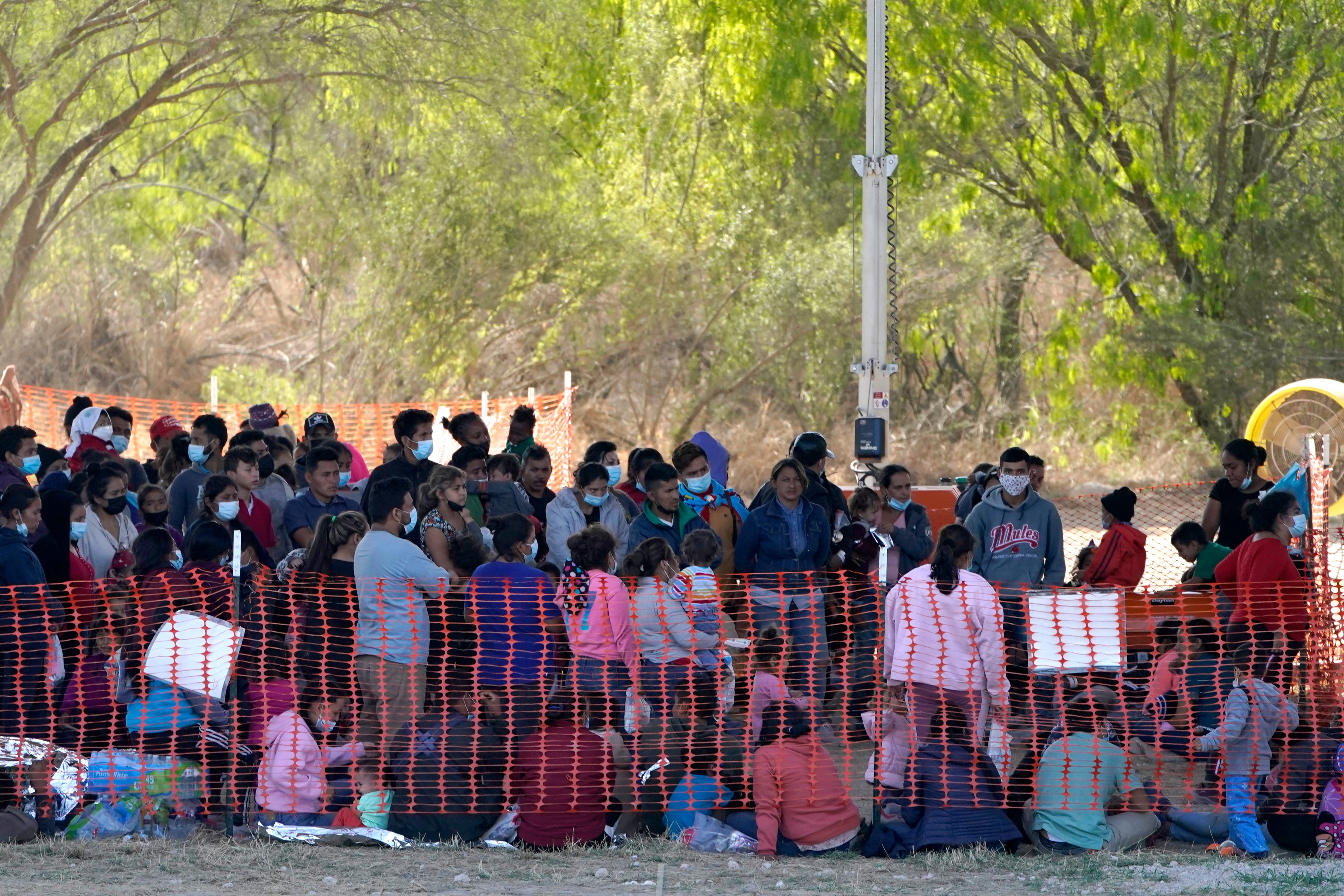
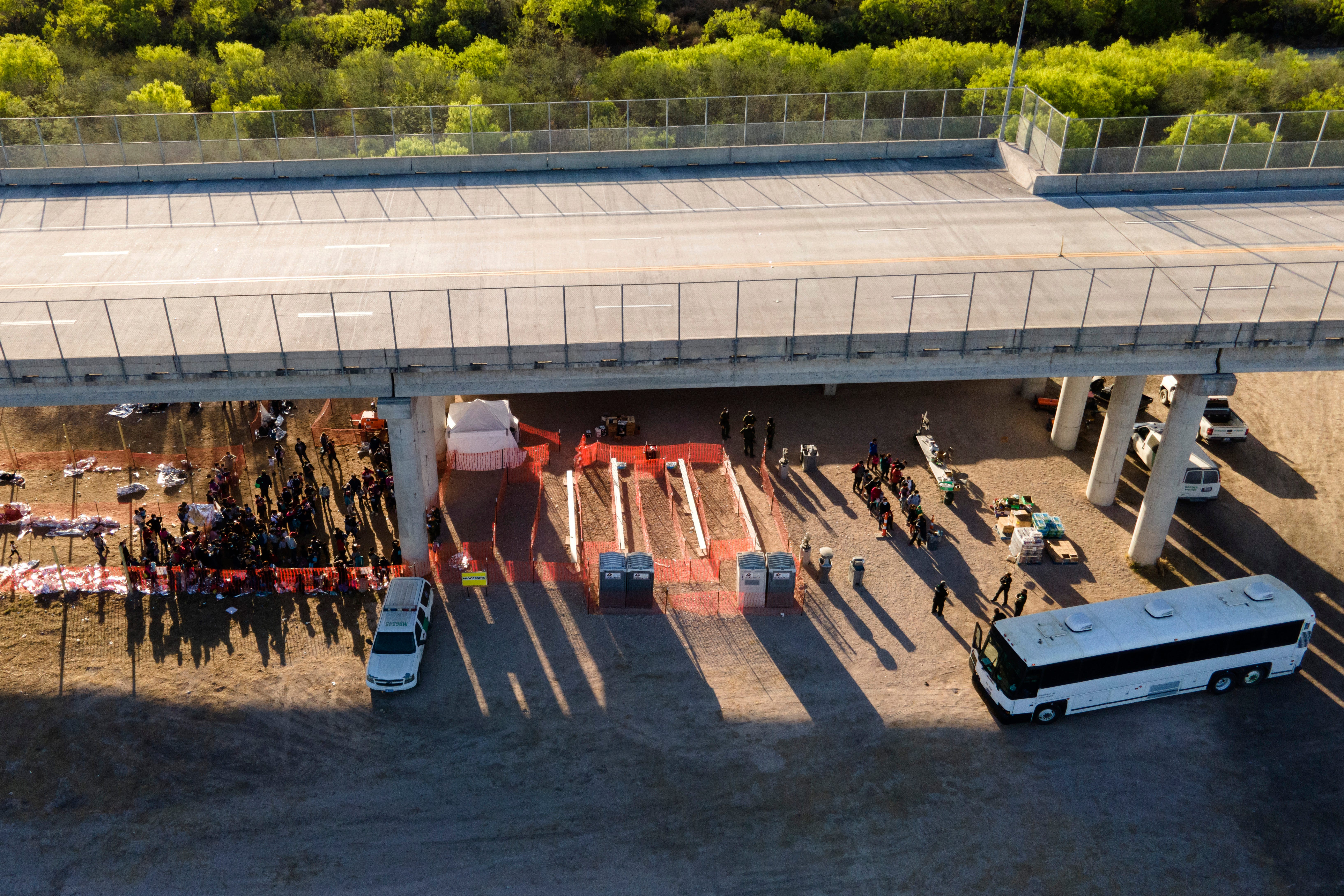 Migrants are seen in custody at a U.S. Customs and Border Protection processing area under the Anzalduas International Bridge, Friday, March 19, 2021, in Mission, Texas.JULIO CORTEZ, AP
Migrants are seen in custody at a U.S. Customs and Border Protection processing area under the Anzalduas International Bridge, Friday, March 19, 2021, in Mission, Texas.JULIO CORTEZ, AP
The surge
An increase in migrants coming to the U.S. drew the nation’s attention back to the border earlier this year.
The Biden administration has experienced an uptick in migrants coming to the border, including unaccompanied children. As of Friday, 5,381 unaccompanied children were in CBP custody and 13,359 unaccompanied children were in HHS custody.
Both Democratic and Republican lawmakers have criticized Biden for his response to the surge coming to the United States.
With many of the CBP facilities overcrowded, Democratic lawmakers said they want to see the Biden administration quickly move children to their sponsors. Republican lawmakers, however, have criticized Biden for undoing many of Trump’s policies, saying that is what led to the increase. Republicans have also called on Biden to visit the border, something the president has yet to do.
For months, the Biden administration has limited press from touring the HHS and CBP facilities. Late last month, CBS and other media outlets were able to tour a CBP facility in Donna, Texas. Children could be seen sleeping on mats on the floor with Mylar blankets. Many of the pods holding the children were overcrowded and some children could be seen playing soccer outside on an AstroTurf field.
Biden announced last month Vice President Kamala Harris would take the lead in working with Central American countries to help mitigate migration at the border.
Reach Rebecca Morin at Twitter @RebeccaMorin_
